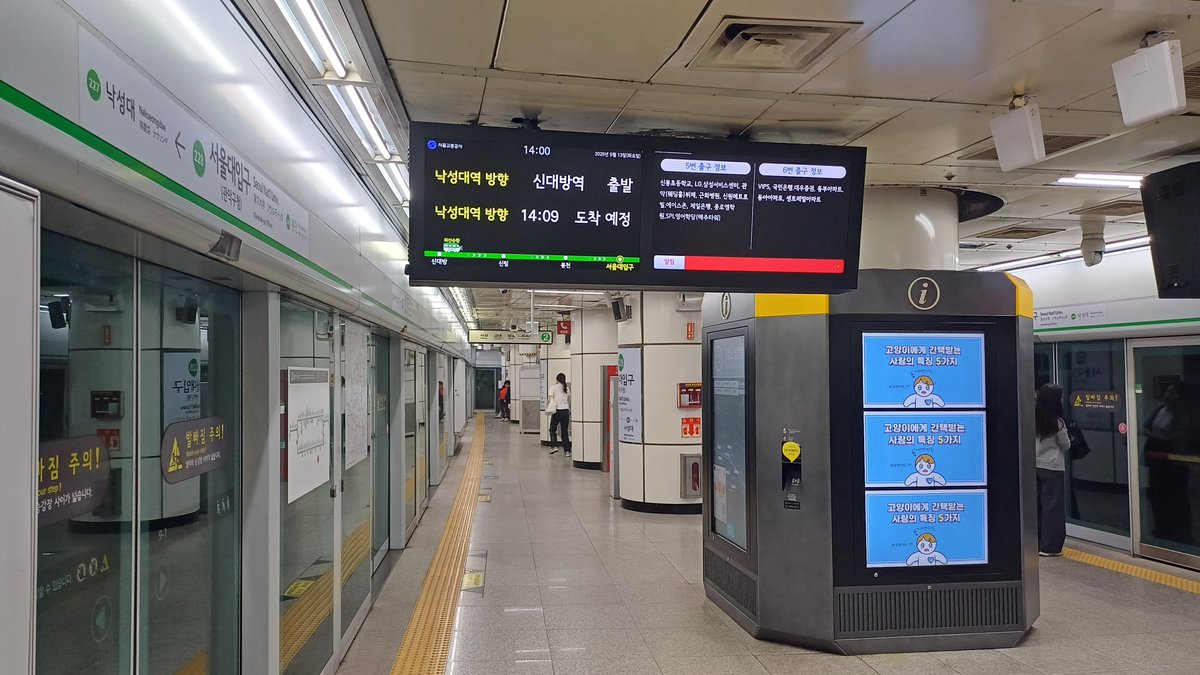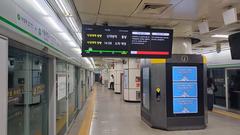
Seoul National University Station: Visiting Hours, Tickets, and Travel Guide
Date: 14/06/2025
Introduction
Seoul National University Station (SNU Station), alongside the newly opened Gwanaksan Station on the Sillim Line, acts as a crucial gateway to one of South Korea’s most distinguished academic institutions. Located in the Gwanak district of southern Seoul, this area is not only home to SNU but also to vibrant student neighborhoods, abundant cultural venues, and scenic natural sites like Gwanak Mountain. Historically, reaching the university was challenging due to the distance from central Seoul, often requiring long walks or crowded shuttle bus rides (SNU History; SNU Media News). The introduction of the Sillim Line and Gwanaksan Station in 2022 has dramatically improved access, making the campus and its surroundings more reachable than ever before (SNU Media News).
This guide presents detailed and practical information for visitors, including station hours, ticketing options, accessibility, transportation tips, and recommendations for nearby attractions. Whether you are a prospective student, a traveler, or a local resident, understanding how to navigate this transit hub will enhance your Seoul experience.
Historical Background and Significance
Evolution of Transit Access
Seoul National University, established in 1946, relocated to the Gwanak foothills in the 1970s, which introduced significant transportation challenges (SNU History; SNU College of Humanities History). For years, Seoul National University Entrance Station (Line 2) was the closest subway stop, but it remained nearly 2 km from the campus, necessitating bus rides or long treks (SNU Media News).
Sillim Line and Gwanaksan Station
The Sillim Line was conceptualized to resolve these transit issues by providing a direct subway link to the SNU campus area. Construction began in 2016, and the line opened in 2022, with Gwanaksan Station just 350 meters from SNU’s main gate (SNU Media News). This new connection significantly reduced commute times for students, faculty, and visitors, as well as improved access for southwestern Seoul neighborhoods.
Impact and Urban Integration
The improved transit connectivity has not only shortened commutes but also revitalized nearby business districts, boosted local commerce, and better integrated the university with the city’s urban fabric. Architecturally, Gwanaksan Station blends modern functionality with the natural beauty of its mountainous surroundings, symbolizing SNU’s role in both academic advancement and sustainable city planning (SNU Media News).
Practical Information for Visitors
Station Hours
- Gwanaksan Station (Sillim Line): Operates daily from 5:30 a.m. to midnight.
- Seoul National University Station (Line 2): Similar operational hours, with frequent train service during peak and off-peak periods.
Ticketing and Fares
- Ticket Purchase: Use station kiosks for paper tickets or recharge contactless T-money cards.
- Standard Fare: Starts at 1,350 KRW for single journeys, with incremental increases based on distance.
- Discounts: Available for students, seniors, and persons with disabilities.
- T-money Card: Recommended for convenience, applies to subways, city buses, and some taxis (Wheelchair Travel).
Accessibility
Both stations are fully accessible:
- Elevators and Ramps: Connect all levels from street to platforms.
- Tactile Paving and Braille Signage: For visually impaired travelers.
- Wide Fare Gates: For wheelchairs and strollers.
- Accessible Shuttle Buses: SNU provides shuttles equipped with lifts for visitors with disabilities (SNU OIA).
Navigation and Transfers
- Major Transfers: At Gwanaksan (Sillim Line), Saetgang (Line 9), Sindaebang (Line 1), Boramae (Line 7), and Sillim (Line 2).
- Recommended Apps: KakaoMap and Naver Map offer real-time schedules and routing in English (Korea Travel Planning).
- Tips: Use Exit 3 at SNU Station for bus connections to campus.
Getting to Seoul National University Campus
Subway to Bus Transfer
- Distance: SNU Station is about 1.75–2.5 km from the campus main gate.
- Bus Connections:
- Bus 5511: Most direct to the main entrance.
- Bus 5513: For the dormitory area.
- Bus 5516: For internal campus routes and connections to other subway lines.
- Bus 8507: For Sadang Station and KTX Gwangmyeong Station (SNU OIA).
- Campus Shuttles: Free internal routes in clockwise and counterclockwise directions, stopping at academic and residential buildings.
Accessibility Support
SNU offers specialized shuttle services for those with mobility needs; contact the SNU Center for Students with Disabilities to arrange service (SNU OIA).
Visiting Hours and Tickets for SNU Campus and Attractions
- Campus Grounds: Open to the public typically from 9:00 a.m. to 6:00 p.m.
- SNU Museum of Art: May require ticket purchase and advance booking for special exhibitions (SNU Museum).
- Guided Tours: Available via SNU Campus Tours—reservations are advised for groups.
Nearby Attractions and Local Insights
Gwanak Mountain (Gwanaksan)
A premier hiking destination, Gwanaksan offers trails for all levels, Buddhist temples, and panoramic city views. Entry is free and the area is especially scenic during spring and autumn (Mt. Gwanak Hiking Trails).
Campus and Neighborhood Culture
- SNU Campus: Features a blend of modern and historic architecture, lush greenery, and cultural venues.
- Gwanak-gu: Known for its lively, student-driven atmosphere, affordable eateries, and local markets.
- Street Food: Sample Korean favorites at stalls near the station and on campus.
Access to Citywide Attractions
Line 2 provides direct connections to major Seoul destinations such as Gangnam, Hongdae, and Dongdaemun (Creatrip).
Visitor Tips
- Peak Hours: Avoid 7:00–9:00 a.m. and 5:00–7:30 p.m. for less crowded travel.
- T-money Card: Purchase and recharge at any subway station or convenience store.
- Navigation: Use apps for real-time exit and transfer information.
- Language: English signage exists, but a translation app can help in some areas.
- Safety: The area is safe; observe local customs on public transport.
Frequently Asked Questions (FAQ)
Q: How do I get from Incheon Airport to SNU?
A: Take the AREX Airport Express to Seoul Station, transfer to Line 2, disembark at Seoul National University Station, and take bus 5511 or a campus shuttle (Wheelchair Travel).
Q: Are the stations and campus accessible for people with disabilities?
A: Yes, both offer elevators, ramps, and accessible shuttles (SNU OIA).
Q: What are the campus visiting hours?
A: Generally 9:00 a.m. to 6:00 p.m., though individual facilities may differ.
Q: Are tickets required to enter SNU?
A: Entry to campus is free; some venues like the museum may charge a small fee.
Q: How do I join a guided campus tour?
A: Reserve through the SNU Campus Tours website.
Summary and Recommendations
Seoul National University Station and Gwanaksan Station have transformed campus access, supporting a seamless journey for students, faculty, and visitors and invigorating the Gwanak area culturally and economically (SNU Media News). With comprehensive facilities, strong accessibility, and direct links to natural and cultural attractions, these stations are more than transit hubs—they are gateways to the heart of Seoul’s academic and local life (Mt. Gwanak Hiking Trails; Creatrip).
Useful Resources and Official Links
- SNU Media News
- SNU Campus Tours
- Transportation Options and Visitor Navigation (SNU OIA)
- Mt. Gwanak Hiking Trails
- Creatrip: Seoul Line 2 Guide
- Wheelchair Travel: Seoul Public Transportation
Download the Audiala app for real-time transit updates, and follow us for the latest travel tips and cultural guides.














































































































































































































